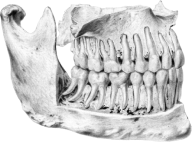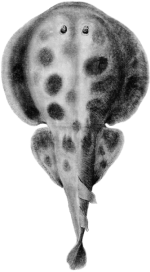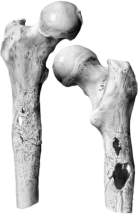
Modern surgery gallery
Biology
• Blood
• Cleanliness
• Patient experience
• Seeing inside the body
Please be aware the 19th Century Surgery Gallery is currently undergoing work, and some objects may not be on display. Objects from the gallery can be explored through our free digital guide.
This resource supports the teaching of Biological sciences and healthcare curricula.
- GCSE
- A-Level
- BTEC
- To make links between the museum’s collection, science and health care curricula and everyday life.
- To develop observation and communication skills.
- To learn about how these topics has changed over time.
45 minutes - 1 hour
How to use this resource:
Exploring the Hunterian Museum: recording the objects
Instructions: Select objects that can be linked together to create a virtual ‘mini-tour’ of the Hunterian Museum back at school
- Split your students into groups of four
- Assign a topic to each group
- Students are asked to explore the Museum and 'collect’ objects by drawing or writing about them on the ‘blank object cards’
- Print out the blank object card and hand out one set to each student
There are object information cards linked to each topic with questions to help the students choose objects and a topic map to find related objects in the Museum. You may want to print a map and info card to hand out to each group.
Different members of the group should record the details of different objects. Interesting object descriptions will lead to interesting tours.
By the end of the session each group should have collected at least eight object cards describing eight separate objects. They can collect more objects.
They might want to include objects that are in places not marked on your map.
Make a tour: ordering and linking objects
IN SCHOOL: Ask the students to organise the objects or specimens they have collected to create an interesting and logical tour.
- Ask the students to decide which order their chosen objects or specimens to create a tour. (For example, you might want to order chronologically)
- They will need to mention some additional information, such as other historical events that affected the development of objects?
Or maybe they can note how similar the two objects are although they were made years apart? They might want to recount a personal reason that connects the two objects - Each team decides who presents which part of the tour

Syringe and hypodermic needle, 1940
Blood
Map of the Hunterian Museum with information focusing on blood (docx, 580.856 KB)
Information card about blood (docx, 41.673 KB)
Instructions for students (docx, 49.632 KB)
Blank object cards (docx, 39.217 KB)

Lister’s ‘donkey engine’, for use in surgery, 1871
Cleanliness
Map of the Hunterian Museum with information focusing on cleanliness (docx, 556.489 KB)
Information card about cleanliness (docx, 46.212 KB)
Instructions for students (docx, 49.632 KB)
Blank object cards (docx, 39.217 KB)

Transforming Lives display in the Hunterian Museum
Patient experience
Map of the Hunterian Museum with information focusing on patient experience (docx, 574.448 KB)
Information card on patient experience (docx, 43.22 KB)
Instructions for students (docx, 49.632 KB)
Blank object cards (docx, 39.217 KB)

Female and male human anatomical figures, 1600s


